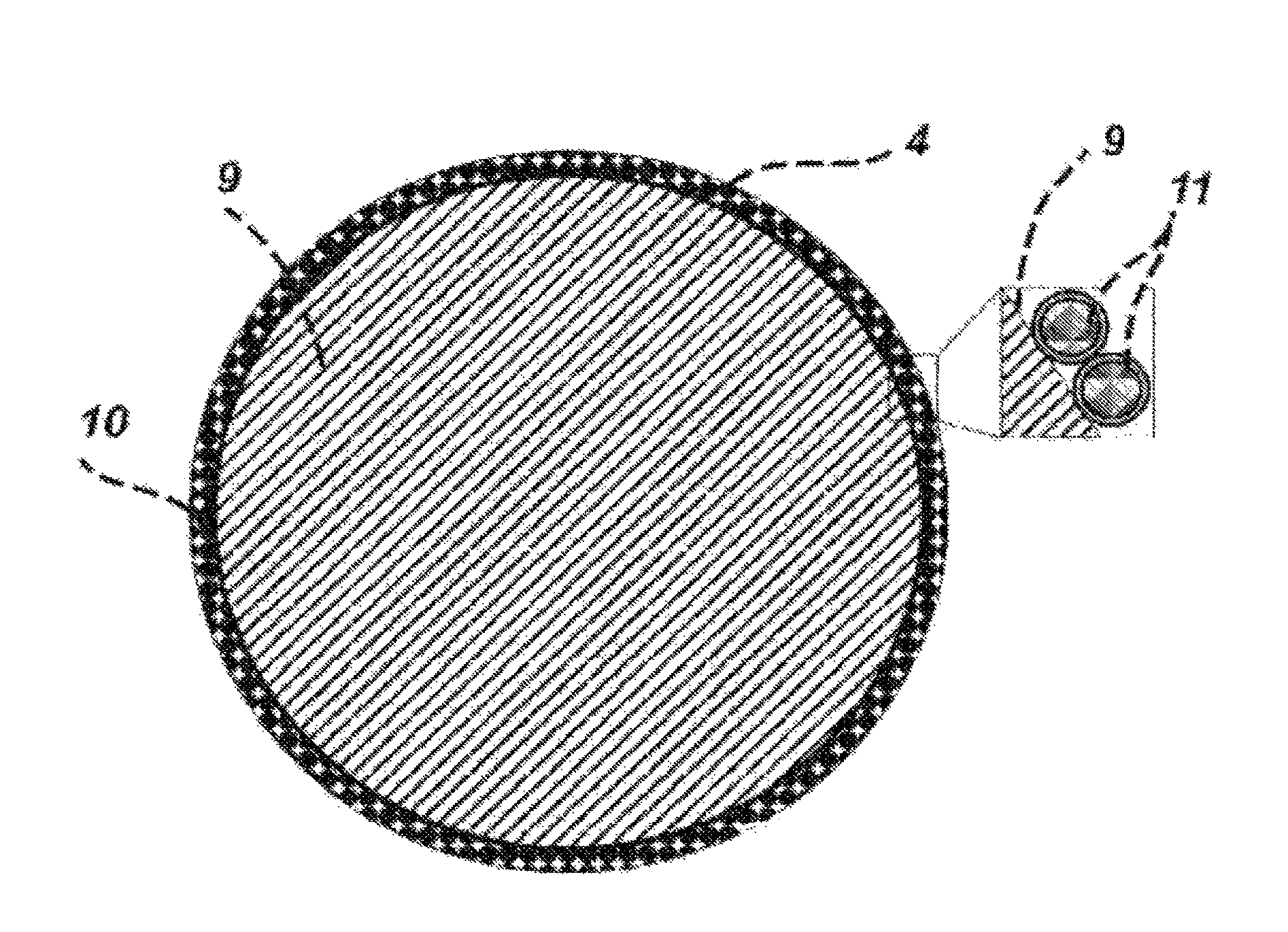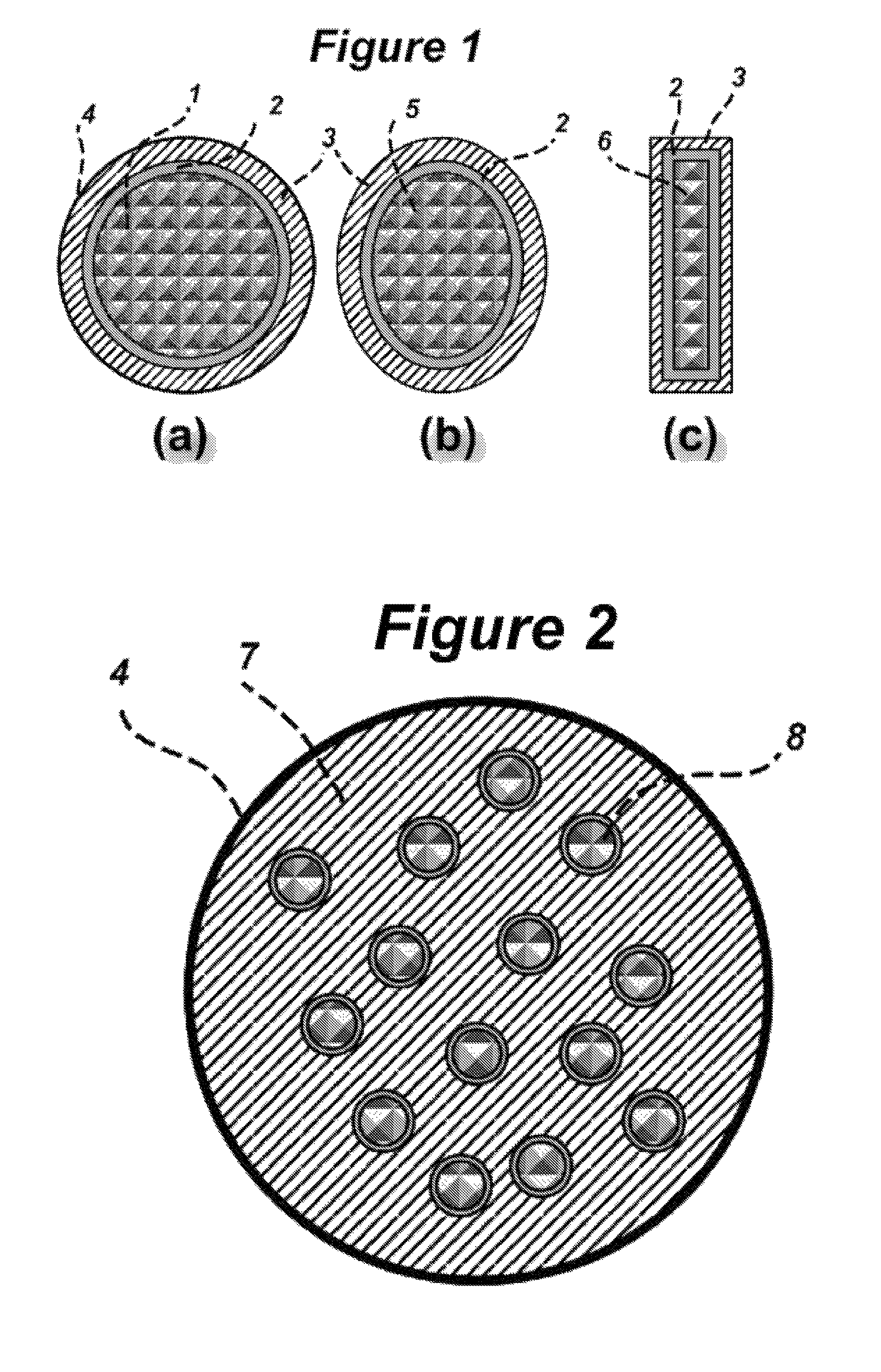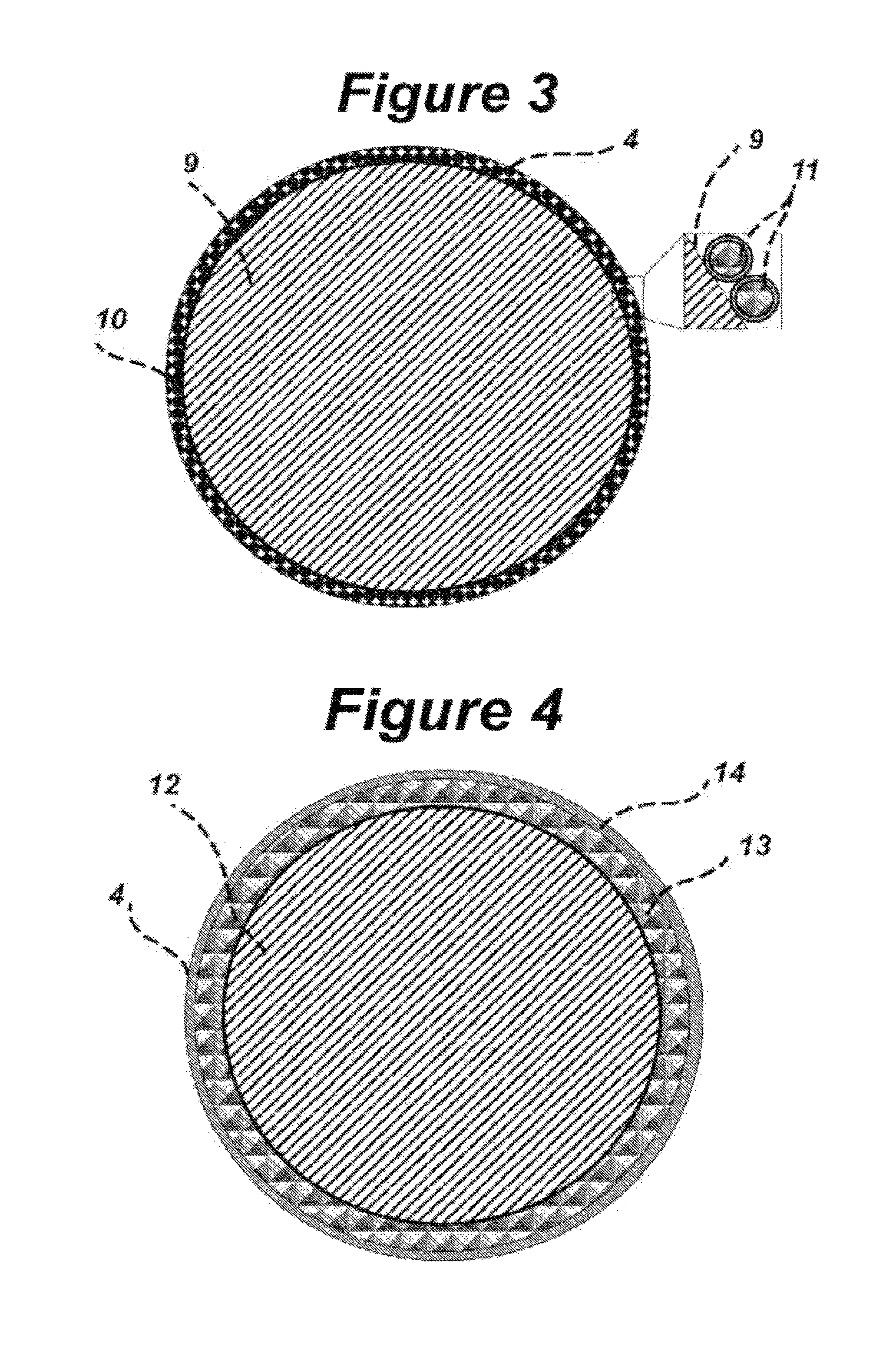Tailored magnetic particles comprising a non-magnetic component and a magnetic core-shell component, and method to produce same
a technology of magnetic particles and components, applied in the field of magnetic particles, can solve the problems of low magnetic susceptibility of magnetic particles, inability to control and adapt to specific applications of magnetic particles (beads) of the above kind, and the inability to effectively manipulate such elongated and laminar shape particles, etc., to achieve the effect of advantageously controlling the aggregation length of particles
- Summary
- Abstract
- Description
- Claims
- Application Information
AI Technical Summary
Benefits of technology
Problems solved by technology
Method used
Image
Examples
first embodiment
[0045]To obtain the first aspect of the invention, according to the invention (as shown in FIG. 1), primary fine magnetic particles are composed from a ferromagnetic material particle core (1) coated with a fine shell material (2). The shell materials can be chosen either among antiferromagnetic material, a ferromagnetic magnetic of a kind different from the core ferromagnetic material or transition metal material. In the case of an antiferromagnetic material shell, the Néel temperature of the antiferromagnetic phase is not less than 300 K. This primary fine particle is encapsulated in a non-magnetic material matrix (3). Preferably such matrix material is a polymer, silica or glass. The surface (4) of the so-formed secondary magnetic responsive particle is biochemically functionalised by specific ligands for the probing and manipulating of biomolecules and chemical substances using well-known techniques. For this, the magnetic particle surface comprises for example a functional grou...
second embodiment
[0048]In the first aspect of the invention (shown in FIG. 2), secondary magnetically responsive particles are obtained by encapsulating at least one of the primary fine magnetic particles (8) in particular of the kind described above in connection with FIG. 1 in a non-magnetic material matrix (7). The amount, the size and the distribution within the matrix (7) of the primary fine particles (8) determine the entire magnetic proprieties of the final particle. More specifically, the coercive field of the particle is set by adjusting first the coercive field of fine primary particles components and secondly by adjusting the size and the concentration of the fine particles (8) within the matrix (7). The surface (4) of the so-formed secondary magnetic responsive particle is bio-chemically functionalised, for example as described above.
third embodiment
[0049]the first aspect of the invention (shown in FIG. 3), consists of secondary magnetically responsive particles obtained by the deposition of a layer (10) of primary fine magnetic particles (11) in particular of the kind described above in connection with FIG. 1 on non-magnetic material bead (9). The thickness of the deposited layer (10), the concentration and the size of the primary fine particles (11) within the layer (10) determine the entire magnetic proprieties of the secondary particles. More specifically, the coercive field of the secondary particle is set by adjusting first the coercive field of the deposited fine particles (11) and secondly by adjusting the size of the ferromagnetic core (1,5,6), the amount and concentration of the particles (11) within the layer (10) and the thickness of the layer (10).
PUM
| Property | Measurement | Unit |
|---|---|---|
| Néel temperature | aaaaa | aaaaa |
| coercive field | aaaaa | aaaaa |
| size | aaaaa | aaaaa |
Abstract
Description
Claims
Application Information
 Login to View More
Login to View More - R&D
- Intellectual Property
- Life Sciences
- Materials
- Tech Scout
- Unparalleled Data Quality
- Higher Quality Content
- 60% Fewer Hallucinations
Browse by: Latest US Patents, China's latest patents, Technical Efficacy Thesaurus, Application Domain, Technology Topic, Popular Technical Reports.
© 2025 PatSnap. All rights reserved.Legal|Privacy policy|Modern Slavery Act Transparency Statement|Sitemap|About US| Contact US: help@patsnap.com



